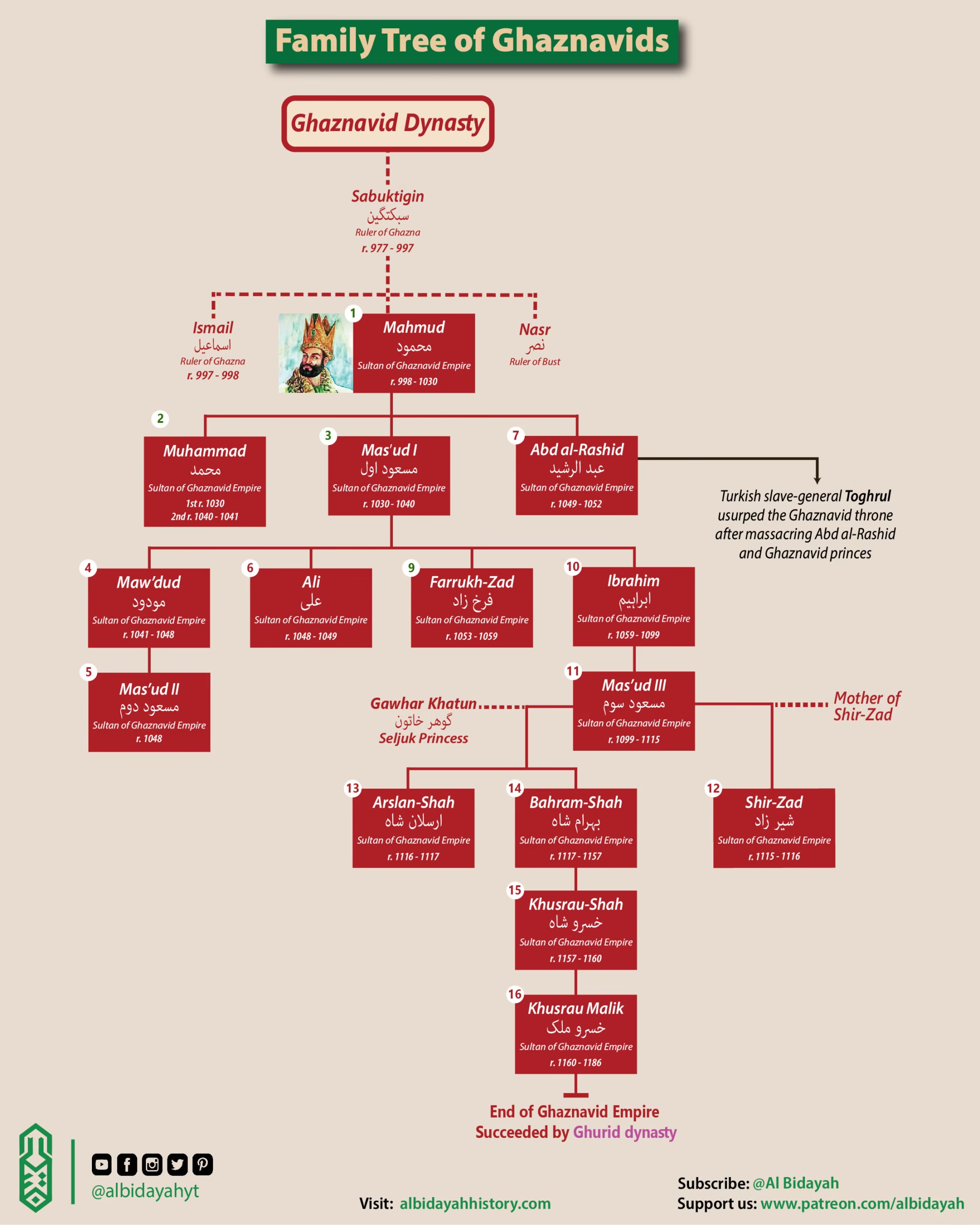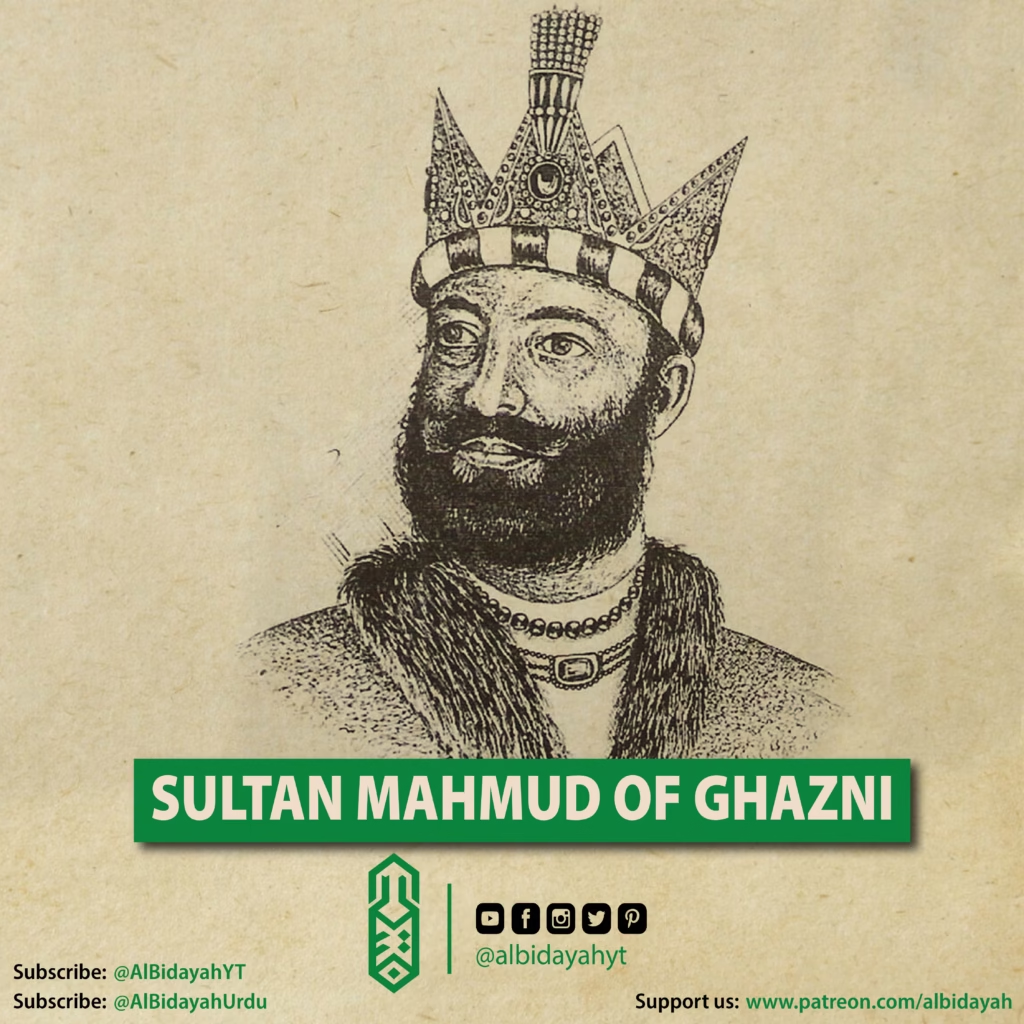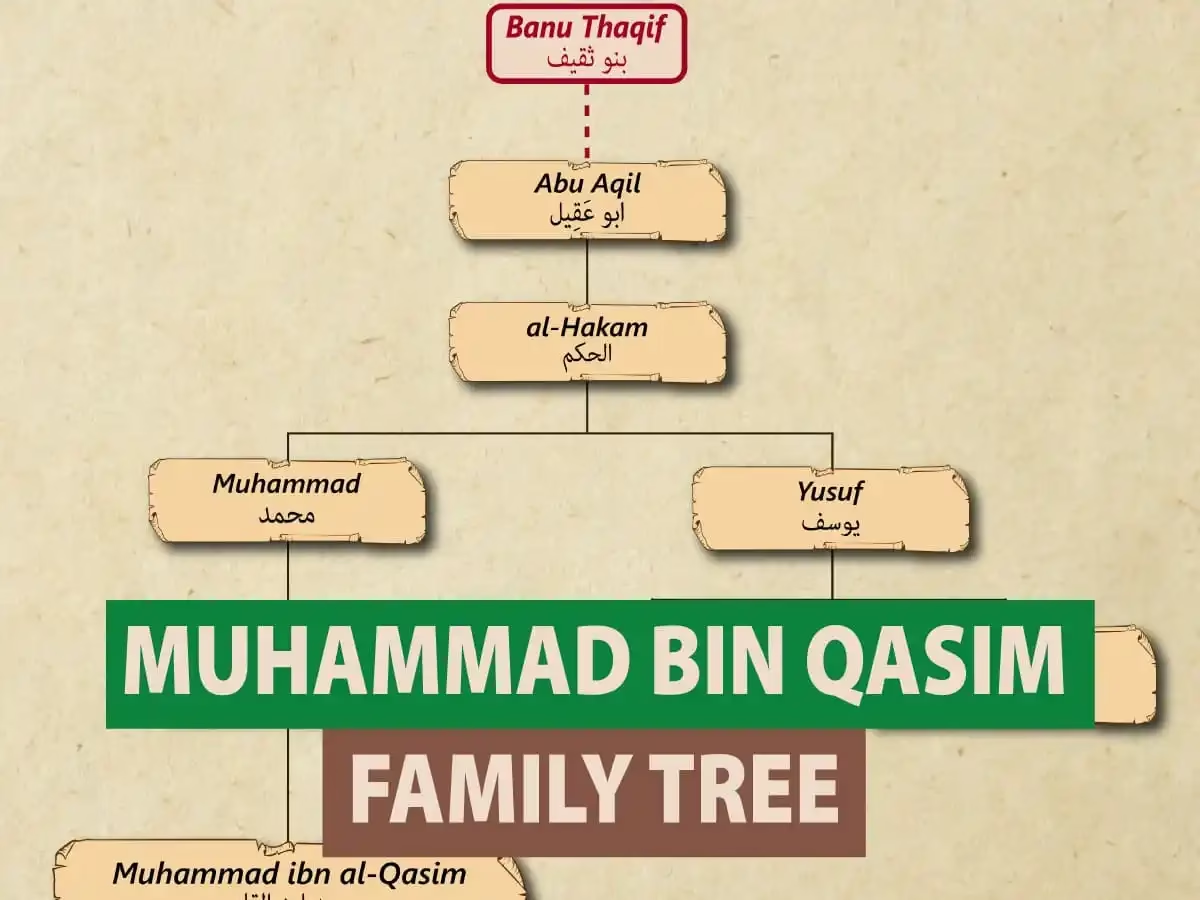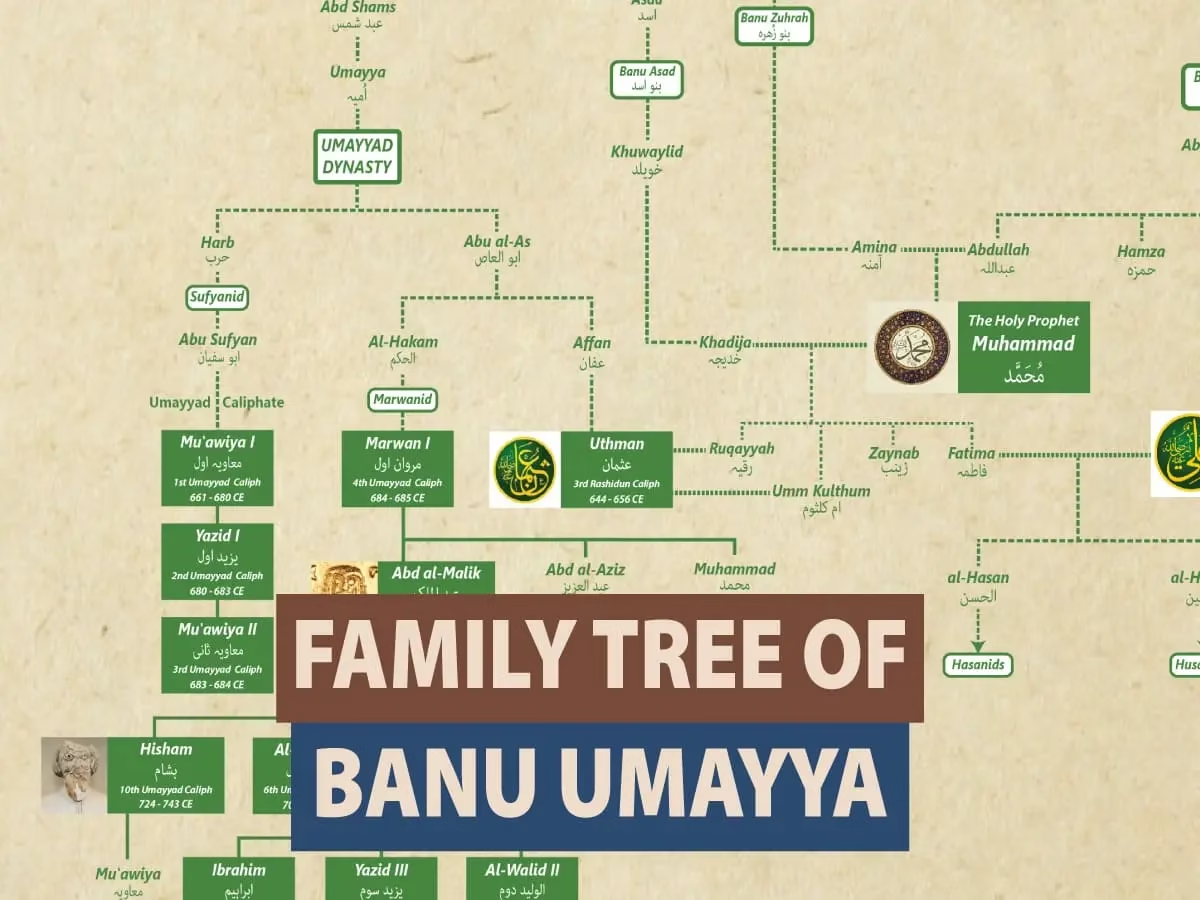
See Also: Khalid bin Walid Family Tree
Sabuktigin: Founder of the Ghaznavid Dynasty
Abu Mansur Nasir ad-Din wa’d-Dawla Sabuktigin (c. 940s – August-September 997) was the illustrious founder of the Ghaznavid dynasty and the ruler of Ghazna from 977 to 997. Originally a Turkic slave, Sabuktigin’s rise to power is a remarkable tale of ambition and resilience. Purchased by Alp-Tegin, the commander of the royal guard of the Samanid dynasty, Sabuktigin’s journey began as part of a military entourage in the service of the Samanids.
When Alp-Tegin established himself as the governor of Ghazna in 962, Sabuktigin loyally served under him. After Alp-Tegin’s death in 963, Sabuktigin gained respect and prestige among the slave soldiers stationed in Ghazna. By 977, he was elected by his peers as their leader, marking the beginning of his reign and the foundation of the Ghaznavid dynasty.
Military Conquests and Expansion
Sabuktigin was a visionary ruler who expanded his territory to include southern Afghanistan and northern Balochistan. His military campaigns were particularly focused on the Hindu Shahi dynasty of Kabul. By engaging in frequent conflicts with them, Sabuktigin successfully invaded Indian territories, laying the groundwork for the Ghaznavid Empire’s future incursions into the Indian subcontinent. These campaigns opened the “gates of India,” enabling his successors, most notably Mahmud of Ghazni, to establish Islamic influence in the region.
As a vassal of the Samanid Empire, Sabuktigin also played a crucial role in assisting Nuh II, the Samanid ruler, during a rebellion led by Abu Ali Simjuri. Between 994 and 996, Sabuktigin defeated Simjuri’s forces in several battles, solidifying his loyalty to the Samanids while strengthening his own position.
Political Strategy and Diplomacy
Toward the end of his reign, Sabuktigin demonstrated strategic acumen by forging an agreement with the Kara-Khanid Khanate, the Samanid Empire’s rivals. The agreement aimed to partition the Samanid realm between them, highlighting Sabuktigin’s pragmatic approach to alliances and territorial ambitions. However, before he could realize this plan, Sabuktigin passed away in August-September 997 while returning to Ghazna.
Ismail of Ghazni
Ismail of Ghazni was the emir of Ghazna, reigning for 7 months, from August 997 until March 998.He succeeded his father emir Sabuktigin, who died of an illness acquired in Balkh during a campaign in the Samanid civil war. Ismail was designated his successor by Sabuktigin on his death-bed, while Mahmud, the older brother who was involved in the Samanid civil war, was stationed in Nishapur.Upon receiving this news Mahmud of Ghazni contested Ismail’s right to the throne and divested his charge of Nishapur to his uncle Borghuz and younger brother Nur-ud-Din Yusuf and marched upon Ghazna in what is now Afghanistan.
Mahmud won the Battle of Ghazni and took the crown from Ismail. Ismail spent the rest of his life confined to a fort in Guzgan. The reason behind Sabuktigin’s choice to appoint Ismail as heir over the more experienced and older Mahmud is uncertain. It may have been due to Ismail’s mother being the daughter of Sabuktigin’s old master, Alptigin
1. Mahmud of Ghazni: The Builder of an Empire
Mahmud of Ghazni (971–1030), son of Sabuktigin, was the most renowned ruler of the Ghaznavid Empire, reigning from 998 to 1030. Known by his honorific title Yamin al-Dawla (“Right Hand of the State”), Mahmud transformed his kingdom into a vast military empire stretching from northwestern Iran to Punjab in the Indian subcontinent, including Khwarazm and Makran.
Mahmud ascended the throne at the age of 27, following a brief conflict with his brother Ismail after their father’s death. He was the first ruler to adopt the title of Sultan, symbolizing his authority while maintaining allegiance to the Abbasid Caliphs.

Expansion and Conquests
Mahmud is best remembered for his 17 military campaigns into the Indian subcontinent. Targeting wealthy cities and temples, such as Mathura and Somnath, he amassed immense treasures, which he used to build and strengthen his empire. His invasions significantly weakened the Hindu Shahi dynasty and established Ghazni’s influence over northern India.
Cultural and Political Contributions
Highly Persianized, Mahmud continued the traditions of the Samanids, fostering a vibrant cultural and intellectual environment in Ghazni. His capital became a center of art, science, and commerce, attracting luminaries like the scholar al-Biruni and the poet Ferdowsi. Ghazni rivaled Baghdad in its cultural prominence during Mahmud’s reign.
See Also: Seljuks Family Tree
2. Muhammad of Ghazni: A Turbulent Reign
Muhammad of Ghazni (998–1041), the son of Mahmud of Ghazni, had a brief and tumultuous rule over the Ghaznavid Empire. Born as one of a pair of twins, his shared birth with his brother Ma’sud I led to deep-seated rivalry and civil unrest within the dynasty.
First Reign: A Short-Lived Ascension
Upon the death of his father in 1030, Muhammad ascended the throne. However, his reign was short-lived, lasting only about five months—or, as some sources like Ferishta suggest, as little as 50 days. His twin brother, Ma’sud I, contested his rule, ultimately overthrowing him. To eliminate further threats, Ma’sud ordered Muhammad to be blinded and imprisoned.
Brief Return and Final Downfall
Nine years later, in 1040, Muhammad was reinstated as Sultan after the decline of Ma’sud I’s rule. However, this second tenure was equally short-lived, lasting only about a year. He suffered defeat in a battle in Nangrahar and was slain by his nephew, Maw’dud.
3. Masʽud I of Ghazni
Masʽud I of Ghazni (998–1040), also known as “Amīr-i Shahīd” (“the martyr king“), was the Sultan of the Ghaznavid Empire from 1030 to 1040. He ascended the throne after overthrowing his twin brother, Muhammad, who had initially been designated as the heir by their father, Sultan Mahmud of Ghazni. Masʽud’s reign was marked by military campaigns, territorial struggles, and eventual downfall.
Early Life and Rise to Power
Masʽud and his twin brother Muhammad were born in 998 in the Ghaznavid capital of Ghazni. In 1015, Masʽud was named heir to the throne and appointed governor of Herat by his father, Mahmud of Ghazni. He participated in several military campaigns, including expeditions in Ghur and Jibal, where he achieved significant victories. However, tensions with his father arose, leading to Mahmud’s decision to name Muhammad as his successor shortly before his death in 1030.
Masʽud, supported by key Ghaznavid officials and military leaders, opposed this decision. After defeating Muhammad’s forces, he ascended the throne, blinded his brother, and imprisoned him.
Military Campaigns and Reign
Masʽud initially consolidated his empire, launching campaigns in India and western Iran. Despite his military prowess, his reign was fraught with challenges. He faced rebellions from vassals and governors, conflicts with the Buyids and Kara-Khanids, and increasing pressure from the Seljuq Turks.
One of his significant military setbacks was the Battle of Dandanaqan in 1040. Facing a smaller but highly mobile Seljuq army led by Tughril and Chaghri Beg, Masʽud’s larger forces were decisively defeated. This loss led to the permanent loss of Khorasan and weakened his hold on the empire.
Downfall and Death
Following the defeat at Dandanaqan, Masʽud faced revolts from his army, which reinstated his brother Muhammad as Sultan. Masʽud was imprisoned and later killed, possibly on the orders of Muhammad or his son.
Masʽud’s legacy lived on through his son, Maw’dud, who avenged his father by killing Muhammad and reclaiming the throne. Masʽud had several other sons, including Ibrahim, Ali, and Farrukh-Zad, who also ruled the Ghaznavid Empire in later years.
Masʽud I’s reign was a pivotal period in Ghaznavid history, marked by both territorial expansion and decline, as well as the rise of new powers like the Seljuqs in the region.
4. Mawdud of Ghazni
Mawdud of Ghazni, was a sultan of the Ghaznavids from 1041 – 1050. He seized the throne of the sultanate from his uncle, Muhammad of Ghazni, in revenge for the murder of his father, Mas’ud I of Ghazni. His brother Majdud in Lahore did not recognize him as sultan, but his sudden death paved the way for Mawdud to exercise control over the eastern portion of the Ghaznavid Empire.
Mawdud inherited an empire whose entire western half was overrun by the Seljuk Empire and was battling to continue existing. During his reign the further reaches of the Indian conquests and vassal states also broke away. Mawdud was able to hold on to his Afghan realms and Indus valley territories while pushing north into Central Asia and stabilizing his western front with the Seljuqs.
Keikavus, author of the Qabus nama, was a guest at Mawdud’s court for seven to eight years.
5. Mas’ud II of Ghazni
Mas’ud ibn Mawdud, commonly known as Mas’ud II, was Ghaznavid sultan for sometime in 1048. Masud was the son and successor of Mawdud of Ghazni, and ruled for a short period from (r. 1048 – 1048). He was succeeded by his uncle Ali after his death in 1048.
6. Ali of Ghazni
Ali ibn Mas’ud was the Ghaznavid sultan, ruling from 1048 to 1049.The son of Mas’ud I (r. 1030–1040), Ali succeeded his nephew Mas’ud II (r. 1048). Although Abdur Rashid sent an army led by his vizier to Sistan to arrest Ghaznavi, the vizier changed sides and defeated Ali and replaced him with Abd al-Rashid and he was killed in 1050.
7. Abd al-Rashid of Ghazni
Abd al-Rashid ascended the throne after Maw’dud’s death but faced betrayal within the court. In 1053, a Turkish general named Toghrul assassinated Abd al-Rashid and massacred most of the royal family, plunging the dynasty into further instability.
Toghrul of Ghazni
Toghrul of Ghazna, was a Turkic slave general and usurper of the Ghaznavid throne. He was originally a ghulam in the service of the Ghaznavid Empire. Following his usurpation of the Ghaznavid throne from Abd al-Rashid and massacre of eleven Ghaznavid royal princes, he was known as the accursed, the inauspicious, the arrogant and the contemptible.
8. Farrukh-Zad of Ghazni
Farrukh-Zad, a surviving member of the royal family, restored Ghaznavid rule after Toghrul’s death. He managed to bring a degree of stability to the empire and focused on rebuilding its administrative structure. His reign, though relatively peaceful, was overshadowed by the decline in Ghaznavid power.
9. Ibrahim of Ghazni
Ibrahim of Ghazna was sultan of the Ghaznavid empire from April 1059 until his death in 1099.Having been imprisoned at the fortress of Barghund, he was one of the Ghaznavid princes that escaped the usurper Toghrul’s massacre in 1052. After his brother Farrukh-Zad took power, Ibrahim was sent to the fortress of Nay, the same fortress where the poet Masud Sa’d Salman would later be imprisoned for ten years.
Following Farrukh’s death, Ibrahim was recognized as the last surviving male Ghaznavid. A military escort was sent to fetch him from Nay and he entered Ghazna on 6 April 1059.Ibrahim’s reign was considered a golden age for the Ghaznavid empire, due to the treaties and cultural exchanges with the Great Seljuq empire.
10. Mas’ud III
Mas’ud was sultan for 16 years. In 1112, Mas’ūd III built the Palace of Sultan Mas’ud III in Ghazni, Afghanistan. Mas’ūd also built one of the Minarets of Ghazni.Signs of weakness in the state became apparent when he died in 1115, with internal strife between his sons ending with the ascension of Sultan Bahram Shah as a Seljuk vassal. Bahram Shah defeated his brother Arslan for the throne at the Battle of Ghazni in 1117.
11. Shir-Zad
Shir-Zad was the sultan of the Ghaznavid Empire from 1115 to 1116. A son of Mas’ud III (r. 1099–1115), Shir-Zad served as a governor in India during his father’s reign. The deputy governor of Shir-Zad was Qiwam al-Mulk Nizam al-Din. During his governorship, Shir-Zad became very close friends with the Persian poet Masud Sa’d Salman, who had recently been released from his imprisonment at Nay In one of his poems, Masud Sa’d Salman makes mention of a certain Amir Kaykavus at Shir-Zad’s court in the city of Lahore, which may have been the Ziyarid ruler and author of the Qabus-Nama, Kaykavus.
It was probably at his accession that Shir-Zad adopted the laqab (honorific epithet) of Kamal al-Daula. He ruled for one year, until he was overthrown by his brother Arslan-Shah in February 1116. Shir-Zad fled to the Caspian lands, where he received shelter by the ispahbad (ruler) of the local Bavand dynasty of Tabaristan. With the help of the ispahbad, Shir-Zad made a pilgrimage to Mecca in April–May. After his return, Shir-Zad attempted to regain the throne from his brother, but was killed by the latter.
12. Arslan-Shah of Ghazni
Arslan-Shah of Ghazna was the Sultan of the Ghaznavid Empire from 1116 to 1117 C.E.
In 1116, Arslan Shah overthrew his older brother Shir-Zad, took the Ghaznavid throne, and blinded or imprisoned his remaining brothers, except Bahram who was in Zamindawar. Arslan-Shah also appointed Abu’l-Fath Yusuf as his vizier. After being initially defeated by Arslan at Tiginabad, Bahram, appealed to Seljuk Sultan Ahmad Sanjar, whose sister, Gawhar Khatun, was greatly offended at the conduct of her eldest son Arslan ibn Mas’ud, towards the rest. Incited by her and perhaps by his own ambitious views Sanjar called on Arslan to release his brothers and on his refusal marched against him with an army of 30,000 cavalry and 50,000 infantry.
Arslan was defeated after an obstinate engagement and fled to Ghazna. There, on the plain outside Ghazna, Arslan was decisively defeated and fled to India, where he was supported by the Bu Halim Shaybani family.[9] Ghazna was then subjected to forty days of pillage, which culminated in Bahram’s installment as ruler and vassal of Sanjar. However, as soon as Sanjar had withdrawn his army, Arslan returned, and chased out Bahram ibn Mas’ud who had been left in possession which obliged Sanjar to take the field again.[10] This struggle was Arslan’s last, he was constrained to seek refuge among the Afghans, but was overtaken and put to death, leaving Bahram ibn Mas’ud in undisturbed possession of the throne which Arslan ibn Mas’ud himself had occupied for only two years.
13. Bahram-Shah of Ghazni
Bahram-Shah of Ghazna (1084–1157) was the Sultan of the Ghaznavid Empire from 1117 to 1152. A son of Mas’ud III and Gawhar Khatun, he ascended the throne with the support of Sultan Sanjar of the Seljuq Empire after defeating his rival, Arslan Shah. However, Bahram’s reign was marked by his subservience to the Seljuqs, including paying tributes and sending his son as a hostage to their court.
Despite his dependency on the Seljuqs, Bahram attempted to consolidate his rule by suppressing rebellions, raiding Indian territories, and commissioning cultural works, such as the Persian translation of Kalila wa Dimna. He faced repeated challenges from rivals, notably the Ghurids. His capital, Ghazna, was sacked and burned by Ala al-Din Husayn of Ghur in 1150, forcing Bahram to flee to India.
Bahram eventually regained control of Ghazna but never fully recovered its former glory. He died in 1157 and was succeeded by his son, Khusrau Shah. His reign symbolized the declining power of the Ghaznavid dynasty amidst the rise of regional powers like the Seljuqs and Ghurids.
See Also: Sultan Alp Arslan Family Tree
14. Khusrau Shah of Ghazni
Khusrau Shah was the penultimate sultan of the Ghaznavid Dynasty from 1157 to 1160., and the eldest son of Bahram-Shah. During his short reign, he lost southeastern Afghanistan to Ala al-Din Husayn, Malik of Ghurid Empire. He was succeeded by his son, Khusrau Malik.
Khusrau Shah became sultan in 1157 CE. Shortly afterwards, Ala al-Din Husayn ran a new campaign. Although Minhaj-i-Siraj stated that Ala al-Din Husayn already had captured the Ghaznavid possessions in southeastern Afghanistan, including Zamindawar, according to Bosworth it could be “an anticipation of what actually happened”.Fakhr-i Mudabbir stated a battle between two armies in which Khusrau Shah was defeated. According to O’Neal, Khusrau Shah rebuilt army and moved towards west to capture the western lands of Ghurids, but faced with Ala al-Din army in Herat, he was defeated. He was forced to agree with pact that gives the Ghurids mentioned lands.
Khusrau Shah’s reign after war is mostly unknown, but it is known that he died in 1160 and was succeeded by his son Khusrau Malik, the last Ghaznavid Sultan, which was defeated by Ghurids and died sometime after 1184.
15. Khusrau Malik of Ghazni
Khusrau Malik was the last Sultan of the Ghaznavid Empire, ruling from 1160 to 1186. He was the son and successor of Khusrau Shah (r. 1157–1160). In 1161/2, a group of Oghuz Turks seized the Ghaznavid capital of Ghazni, forcing Khusrau Malik to retreat to Lahore, which became his new capital. From there he made incursions into northern India, expanding his rule as far as southern Kashmir. He also created an alliance with the Indian Khokhar tribe. In 1170, Khusrau (or one of his commanders) invaded the southern part of the Ganges.
In 1178 the Ghurid ruler Mu’izz al-Din Muhammad invaded the southern part of Ghaznavid Punjab and reached as far as Gujarat. In 1179/80 he seized Peshawar, and by 1181/2 swept around Lahore, but Khusrau Malik managed to keep him from the city by paying him so he retreated from Lahore instead of laying siege to the city. However, Lahore was finally captured by the Ghurids in 1186, while Khusrau-Malik and his son Bahram-Shah were taken to Ghur and imprisoned, marking the end of the Ghaznavid Empire. Both were executed in 1191.


